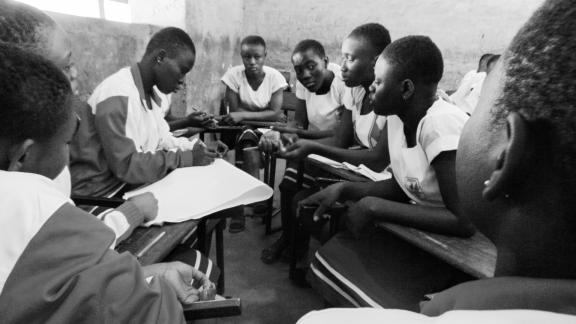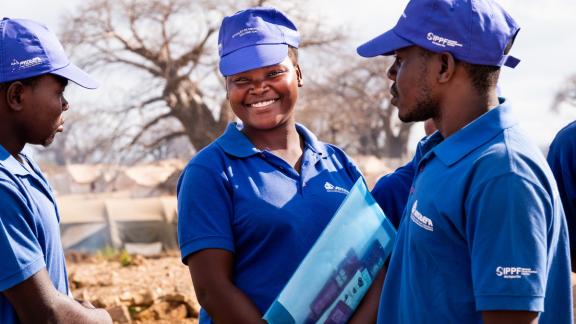Spotlight
A selection of stories from across the Federation

Advances in Sexual and Reproductive Rights and Health: 2024 in Review
Let’s take a leap back in time to the beginning of 2024: In twelve months, what victories has our movement managed to secure in the face of growing opposition and the rise of the far right? These victories for sexual and reproductive rights and health are the result of relentless grassroots work and advocacy by our Member Associations, in partnership with community organizations, allied politicians, and the mobilization of public opinion.
Most Popular This Week

Advances in Sexual and Reproductive Rights and Health: 2024 in Review
Let’s take a leap back in time to the beginning of 2024: In twelve months, what victories has our movement managed to secure in t
Kazakhstan
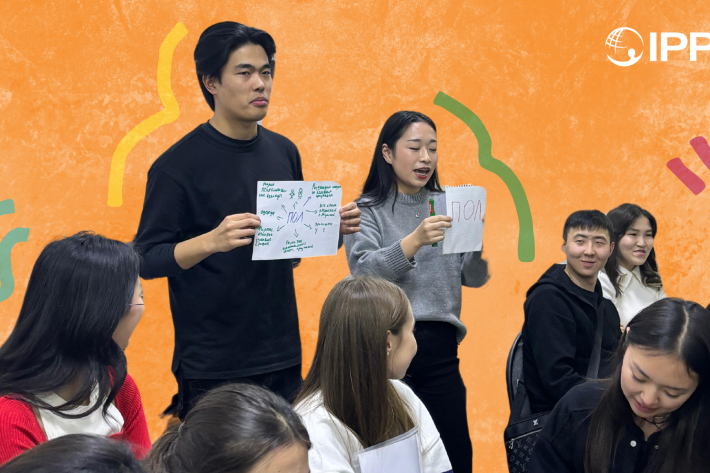
Kazakhstan's Rising HIV Crisis: A Call for Action
On World AIDS Day, we commemorate the remarkable achievements of IPPF Member Associations in their unwavering commitment to combating the HIV epidemic.
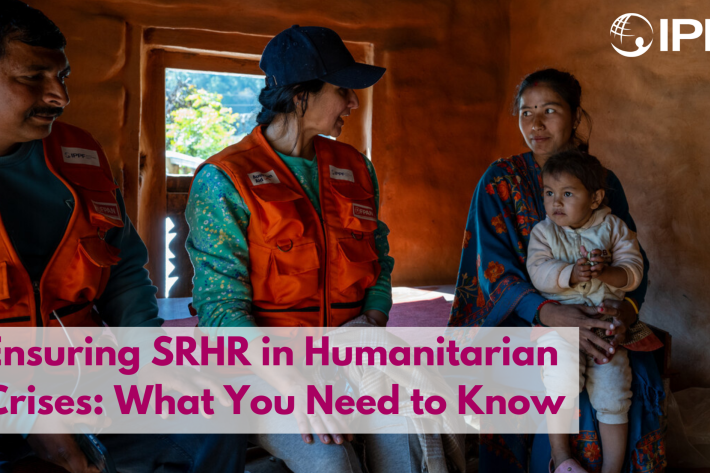
Ensuring SRHR in Humanitarian Crises: What You Need to Know
Over the past two decades, global forced displacement has consistently increased, affecting an estimated 114 million people as of mid-2023.
Estonia, Nepal, Namibia, Japan, Thailand

The Rainbow Wave for Marriage Equality
Love wins! The fight for marriage equality has seen incredible progress worldwide, with a recent surge in legalizations.
France, Germany, Poland, United Kingdom, United States, Colombia, India, Tunisia
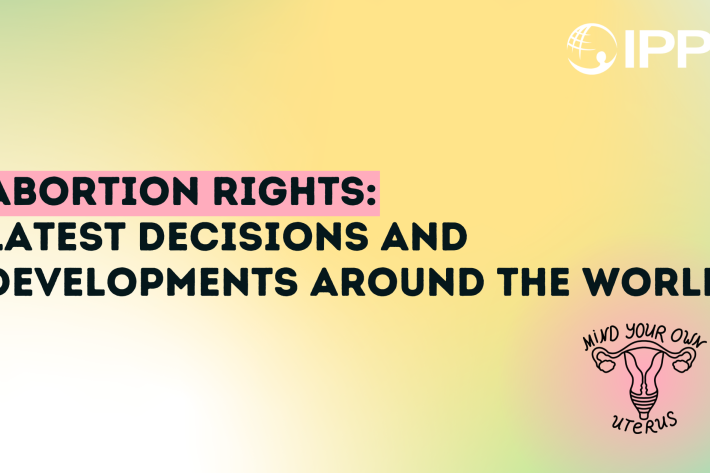
Abortion Rights: Latest Decisions and Developments around the World
Over the past 30 years, more than
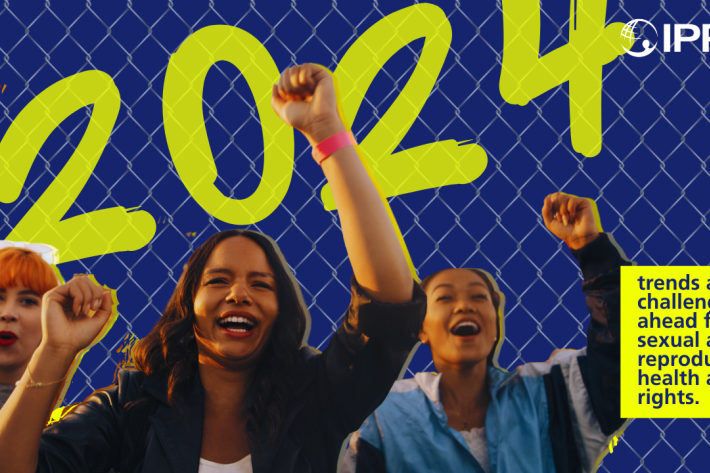
Palestine
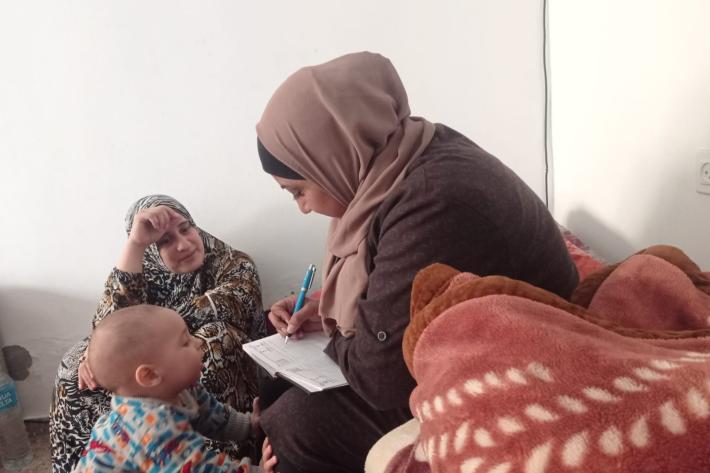
In their own words: The people providing sexual and reproductive health care under bombardment in Gaza
Week after week, heavy Israeli bombardment from air, land, and sea, has continued across most of the Gaza Strip.
Vanuatu

When getting to the hospital is difficult, Vanuatu mobile outreach can save lives
In the mountains of Kumera on Tanna Island, Vanuatu, the village women of Kamahaul normally spend over 10,000 Vatu ($83 USD) to travel to the nearest hospital.
Filter our stories by:
- Afghanistan
- (-) Albania
- Aruba
- (-) Bangladesh
- Benin
- Botswana
- Burundi
- Cambodia
- Cameroon
- Colombia
- Congo, Dem. Rep.
- Cook Islands
- El Salvador
- Estonia
- Ethiopia
- Fiji
- France
- Germany
- Ghana
- Guinea-Conakry
- India
- Ireland
- Jamaica
- Japan
- Kazakhstan
- Kenya
- Kiribati
- Lesotho
- Malawi
- Mali
- Mozambique
- Namibia
- Nepal
- Nigeria
- Pakistan
- Palestine
- Poland
- Senegal
- Somaliland
- Sri Lanka
- Sudan
- Thailand
- Togo
- Tonga
- Trinidad and Tobago
- Tunisia
- Uganda
- United Kingdom
- United States
- Vanuatu
- Zambia
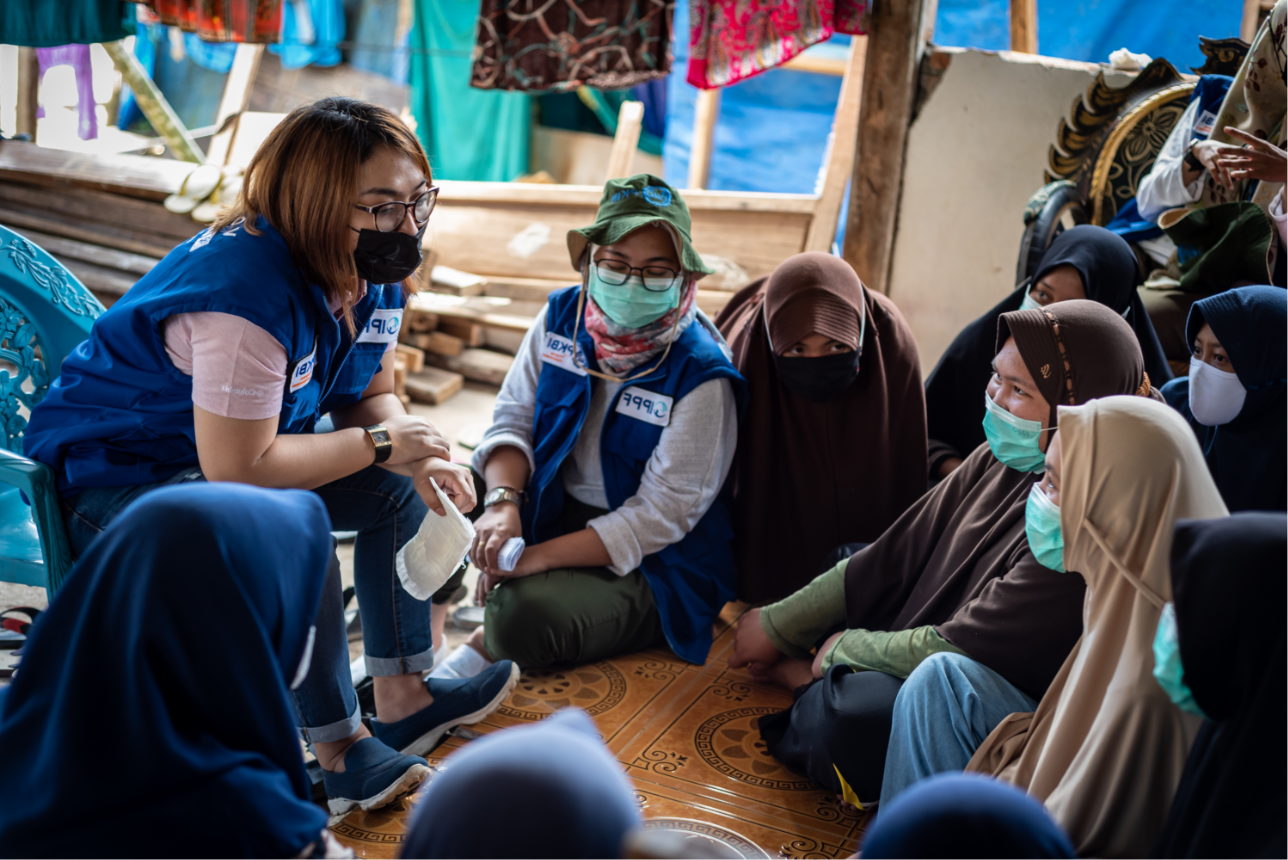
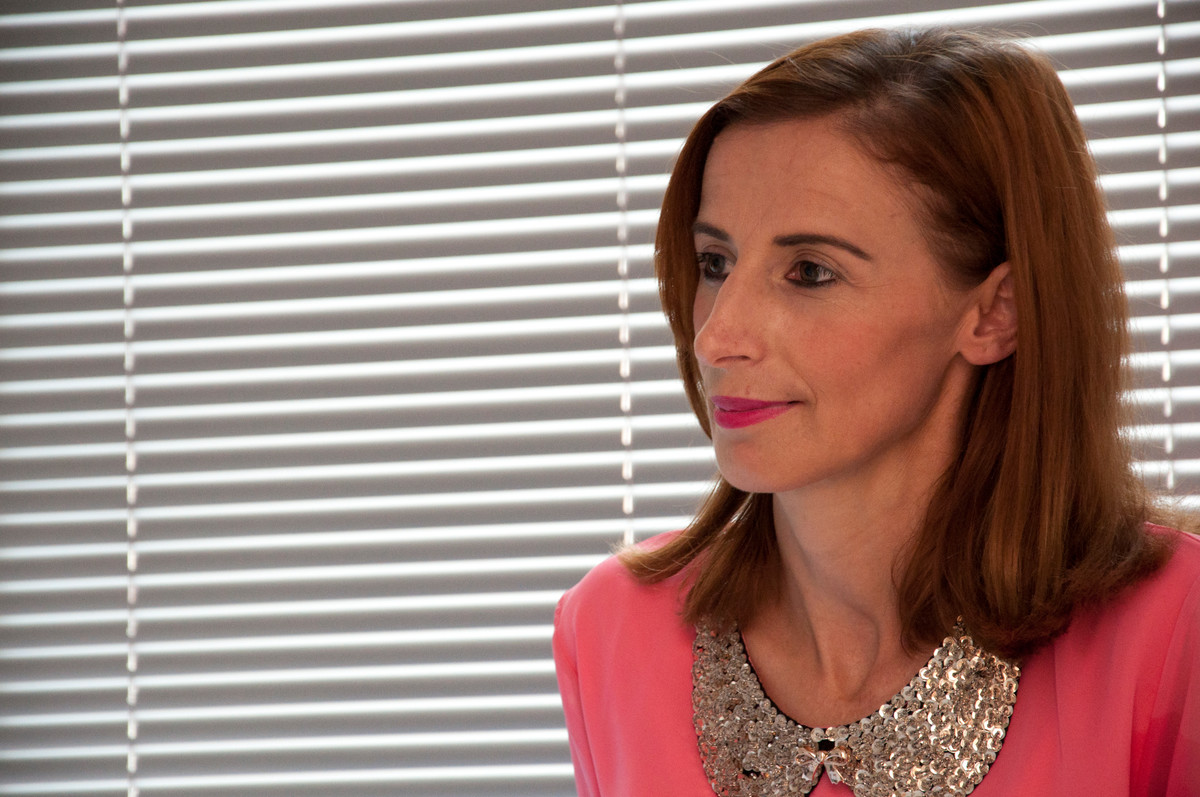
| 19 December 2018
"I decided to do cryotherapy. It was the best decision I have made in my life."
With three children to raise on her own, Liljana’s health was the last thing on her mind but she could no longer ignore the feeling that something was wrong. Through speaking to her friends, she learnt about the Albanian Centre of Population and Development (ACDP) clinic. “First, I had the gynaecological visit and after that, for 1 minute, the doctor did the VIA test. The response was immediate, but positive. I was so scared. The doctor was able to calm me down by explaining everything very simply. Everything was going to be all right because this disease was 100% curable.” Liljana underwent treatment for pre-cancerous lesions for two weeks, but the results of the test were still positive. The doctor suggested cryotherapy. “I decided to do cryotherapy, which is very simple and very comfortable. It was the best decision I have made in my life. After two years, I am completely recovered. I am very grateful to the ACDP clinic, they saved my life.” What is VIA & Cryotherapy? Show more + Visual inspection of the cervix with acetic acid (VIA) is a process of screening and examining the cervix. Pre-cancerous lesions on the cervix will turn white when the acid is applied. This simple procedure can be done in a clinic setting without the use of a laboratory and allows for immediate treatment of any pre-cancerous lesions with cryotherapy. Cryotherapy is a gynaecological treatment that freezes and destroys abnormal, pre-cancerous cervical cells. Cryotherapy is not a treatment for cervical cancer. VIA has the potential to revolutionize cervical cancer prevention efforts, particularly in low resource settings, because it eliminates the need for laboratories, transportation of specimens and provides immediate test results. VIA needs less equipment and fewer specialists than traditional cervical cancer screening methods like Pap tests. Results from VIA are available immediately so women can be screened and treated in one single visit. A happier & healthier life Now Liljana is having routine checks following the advice of the doctor and maintains regular contact with the clinic. “I know that whenever I need advice, I can call the doctor or the nurse and always get a response.” Liljana told all her friends about the VIA procedure and recommended many of them to the clinic in Tirana. Since her successful treatment, Liljana has noticed the relationship with her children has also improved. “My 15 years daughter says that now I smile more than before. She has noticed that before the test I was sad, because I was thinking bad things about my life. This experience has helped me also to talk openly with my daughter about the reproductive and sexual life and teach her to take care of herself. The other two are boys, 13 and 10 years old, but I promise I will talk to them about the importance of having a healthy reproductive and sexual life.”

| 16 May 2025
"I decided to do cryotherapy. It was the best decision I have made in my life."
With three children to raise on her own, Liljana’s health was the last thing on her mind but she could no longer ignore the feeling that something was wrong. Through speaking to her friends, she learnt about the Albanian Centre of Population and Development (ACDP) clinic. “First, I had the gynaecological visit and after that, for 1 minute, the doctor did the VIA test. The response was immediate, but positive. I was so scared. The doctor was able to calm me down by explaining everything very simply. Everything was going to be all right because this disease was 100% curable.” Liljana underwent treatment for pre-cancerous lesions for two weeks, but the results of the test were still positive. The doctor suggested cryotherapy. “I decided to do cryotherapy, which is very simple and very comfortable. It was the best decision I have made in my life. After two years, I am completely recovered. I am very grateful to the ACDP clinic, they saved my life.” What is VIA & Cryotherapy? Show more + Visual inspection of the cervix with acetic acid (VIA) is a process of screening and examining the cervix. Pre-cancerous lesions on the cervix will turn white when the acid is applied. This simple procedure can be done in a clinic setting without the use of a laboratory and allows for immediate treatment of any pre-cancerous lesions with cryotherapy. Cryotherapy is a gynaecological treatment that freezes and destroys abnormal, pre-cancerous cervical cells. Cryotherapy is not a treatment for cervical cancer. VIA has the potential to revolutionize cervical cancer prevention efforts, particularly in low resource settings, because it eliminates the need for laboratories, transportation of specimens and provides immediate test results. VIA needs less equipment and fewer specialists than traditional cervical cancer screening methods like Pap tests. Results from VIA are available immediately so women can be screened and treated in one single visit. A happier & healthier life Now Liljana is having routine checks following the advice of the doctor and maintains regular contact with the clinic. “I know that whenever I need advice, I can call the doctor or the nurse and always get a response.” Liljana told all her friends about the VIA procedure and recommended many of them to the clinic in Tirana. Since her successful treatment, Liljana has noticed the relationship with her children has also improved. “My 15 years daughter says that now I smile more than before. She has noticed that before the test I was sad, because I was thinking bad things about my life. This experience has helped me also to talk openly with my daughter about the reproductive and sexual life and teach her to take care of herself. The other two are boys, 13 and 10 years old, but I promise I will talk to them about the importance of having a healthy reproductive and sexual life.”
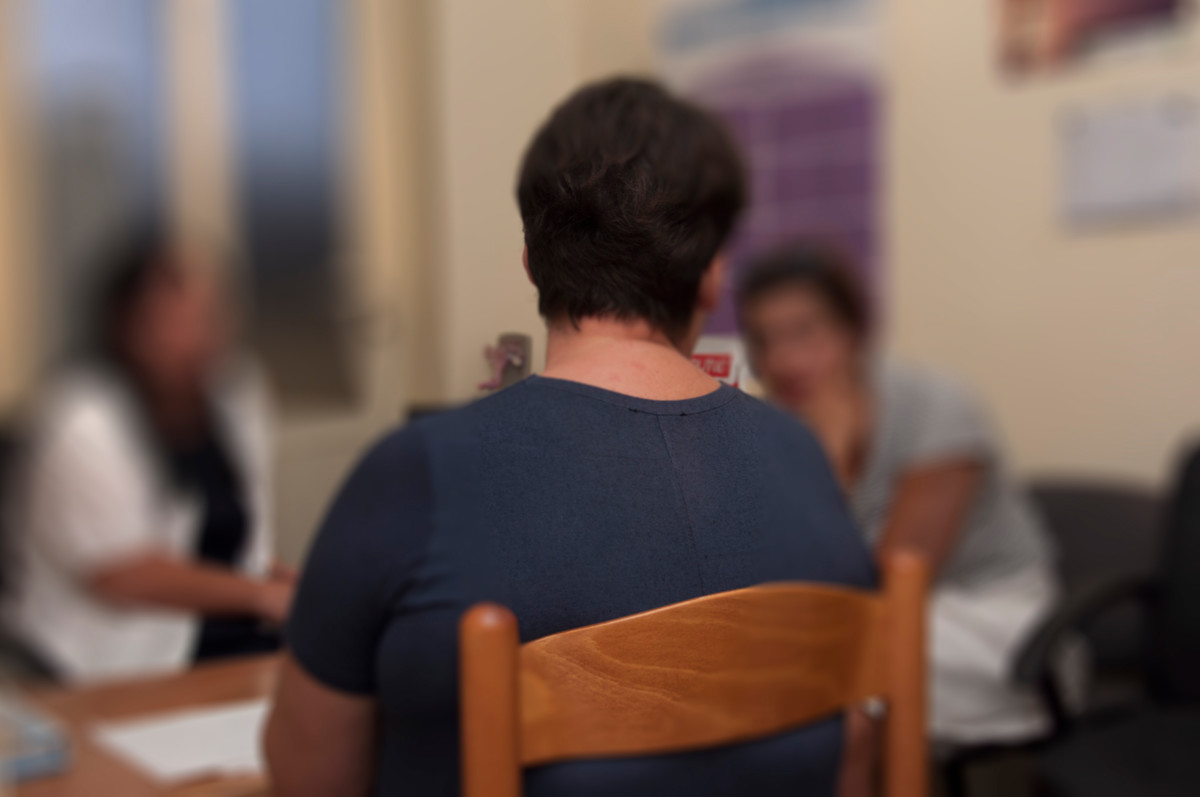
| 19 December 2018
"Nowadays I feel much better and I am clean from signs of cancer”
Eleanor* is a mother of three children, she lives in Vlora, a city in south Albania. Eleanor and her children rely on her husband's modest income to survive. She is only too aware that her economic situation is a major barrier for her to access healthcare. Most treatments are referred to the capital, Tirana, or are at private clinics; incurring costs she simply cannot afford. When she heard about the Aulona Centre offering free PAP tests, she booked an appointment. “I have always admired women who take care of their health. Taking care of ourselves is decisive for our family wellbeing, children and relatives. But in our areas, it is difficult to get proper services, especially for reproductive health”, she says. Eleanor’s first pap smear was in 2012, the results came back negative. The doctor informed her that she had to come back in 3 years for another test. In 2015 she returned to the center, convinced that the results would again be negative. The results came back positive. “I remember the doctor underlining my name with red pen. She said to go to Tirana for further treatment because they had better equipment and staff there.” The encouragement from the staff of Aulona center helped Eleanor decide on her next steps. “While making my decision, I had this vision of my name underlined with red colour, which was an alert sign. So I contacted a doctor in Tirana and had the surgery in 2016. Nowadays I feel much better and I am clean from signs of cancer.” From a client to an activist Her experience with Aulona center has made Eleanor an ardent activist of reproductive health for women. “Every cousin in my family knows about my case. I encourage them to have a PAP screening although they don’t have any concern. For some of them is a matter of shame, because they think if you don’t have any problem, why you should expose intimate parts of your body to the doctor? I challenge them asking what it is more difficult: when the doctor says: Madam, you have few years to live left or just booking a visit? They listen to me more now because they see I recovered.” Through her activism, Eleanor has recently become aware of the VIA testing method and is enthusiastic about it. “The most wonderful thing about this new method [VIA] is that I don’t have to wait 3 weeks for the response. I recall the waiting period for the second test with my eyes attached to the telephone screen. Why are they not calling? Is there anything wrong with my results? VIA avoid all this anxiety, and you can start the therapy immediately.” Eleanor feels confident about her knowledge on sexual and reproductive health. Her own experiences allows her speak more openly with her 20-year-old old daughter, reminding her of the importance of regular screening. “The disease does not ask if you are rich or poor. I could have let myself at risk, but when interventions are at the right time, they save lives.” What is VIA & Cryotherapy? Show more + Visual inspection of the cervix with acetic acid (VIA) is a process of screening and examining the cervix. Pre-cancerous lesions on the cervix will turn white when the acid is applied. This simple procedure can be done in a clinic setting without the use of a laboratory and allows for immediate treatment of any pre-cancerous lesions with cryotherapy. Cryotherapy is a gynaecological treatment that freezes and destroys abnormal, pre-cancerous cervical cells. Cryotherapy is not a treatment for cervical cancer. VIA has the potential to revolutionize cervical cancer prevention efforts, particularly in low resource settings, because it eliminates the need for laboratories, transportation of specimens and provides immediate test results. VIA needs less equipment and fewer specialists than traditional cervical cancer screening methods like Pap tests. Results from VIA are available immediately so women can be screened and treated in one single visit. *Name has been changed

| 16 May 2025
"Nowadays I feel much better and I am clean from signs of cancer”
Eleanor* is a mother of three children, she lives in Vlora, a city in south Albania. Eleanor and her children rely on her husband's modest income to survive. She is only too aware that her economic situation is a major barrier for her to access healthcare. Most treatments are referred to the capital, Tirana, or are at private clinics; incurring costs she simply cannot afford. When she heard about the Aulona Centre offering free PAP tests, she booked an appointment. “I have always admired women who take care of their health. Taking care of ourselves is decisive for our family wellbeing, children and relatives. But in our areas, it is difficult to get proper services, especially for reproductive health”, she says. Eleanor’s first pap smear was in 2012, the results came back negative. The doctor informed her that she had to come back in 3 years for another test. In 2015 she returned to the center, convinced that the results would again be negative. The results came back positive. “I remember the doctor underlining my name with red pen. She said to go to Tirana for further treatment because they had better equipment and staff there.” The encouragement from the staff of Aulona center helped Eleanor decide on her next steps. “While making my decision, I had this vision of my name underlined with red colour, which was an alert sign. So I contacted a doctor in Tirana and had the surgery in 2016. Nowadays I feel much better and I am clean from signs of cancer.” From a client to an activist Her experience with Aulona center has made Eleanor an ardent activist of reproductive health for women. “Every cousin in my family knows about my case. I encourage them to have a PAP screening although they don’t have any concern. For some of them is a matter of shame, because they think if you don’t have any problem, why you should expose intimate parts of your body to the doctor? I challenge them asking what it is more difficult: when the doctor says: Madam, you have few years to live left or just booking a visit? They listen to me more now because they see I recovered.” Through her activism, Eleanor has recently become aware of the VIA testing method and is enthusiastic about it. “The most wonderful thing about this new method [VIA] is that I don’t have to wait 3 weeks for the response. I recall the waiting period for the second test with my eyes attached to the telephone screen. Why are they not calling? Is there anything wrong with my results? VIA avoid all this anxiety, and you can start the therapy immediately.” Eleanor feels confident about her knowledge on sexual and reproductive health. Her own experiences allows her speak more openly with her 20-year-old old daughter, reminding her of the importance of regular screening. “The disease does not ask if you are rich or poor. I could have let myself at risk, but when interventions are at the right time, they save lives.” What is VIA & Cryotherapy? Show more + Visual inspection of the cervix with acetic acid (VIA) is a process of screening and examining the cervix. Pre-cancerous lesions on the cervix will turn white when the acid is applied. This simple procedure can be done in a clinic setting without the use of a laboratory and allows for immediate treatment of any pre-cancerous lesions with cryotherapy. Cryotherapy is a gynaecological treatment that freezes and destroys abnormal, pre-cancerous cervical cells. Cryotherapy is not a treatment for cervical cancer. VIA has the potential to revolutionize cervical cancer prevention efforts, particularly in low resource settings, because it eliminates the need for laboratories, transportation of specimens and provides immediate test results. VIA needs less equipment and fewer specialists than traditional cervical cancer screening methods like Pap tests. Results from VIA are available immediately so women can be screened and treated in one single visit. *Name has been changed
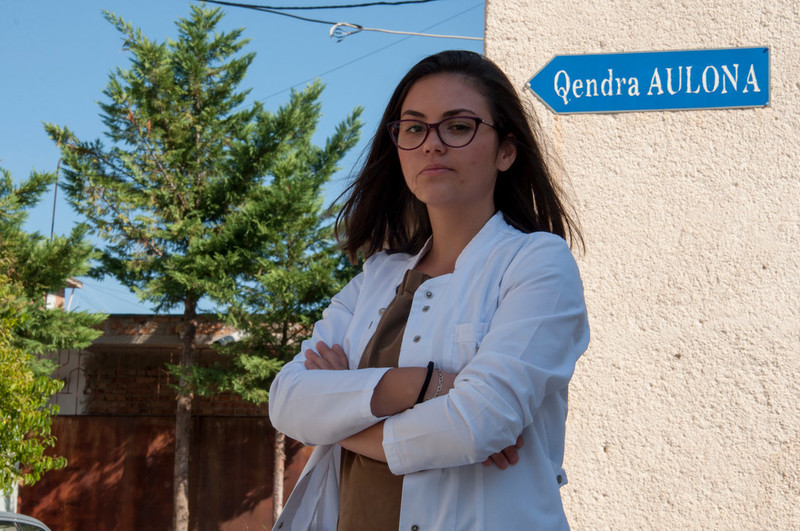
| 18 December 2018
"I do this work because I believe every girl and woman’s life counts.”
Scrolling through her social media page, 21-year-old Artemisa Seraj stumbled across a post from the Aulona Center offering seminars and workshops on sexual and reproductive healthcare for young people and students. Feeling like she had the opportunity to learn something about a subject that she and her friends rarely discuss, she decided to attend one of the seminars. “I found the information very interesting because we don’t talk very much about these things with my friends. It is still a taboo. On the other hand, we know that the sexually transmitted infections are being spread among youngsters, but we don’t know how to protect ourselves.” The first seminar went so well, Artemisa decided that she wanted to become a volunteer. “I like very much to pass the information on to others. So, I discussed with the Enela, the director of the center, to become a volunteer and here I am today.” Empowering women & girls Since becoming an activist Artemisa is now even more passionate about the importance of comprehensive sexuality education (CSE) for young people, gender equality and women’s rights. “I have known many other girls and women in our outreach activities that have no information about their reproductive and sexual life. Especially, girls from rural areas are the most deprived of this kind of information. The health centers have no staff or adequate equipment for gynaecological visits. Aulona center has high standards of friendly services for teenagers and youngsters, so you feel safe and not prejudiced against. Confidentiality is very high here and the doctors are very qualified. In the young groups, you feel like a community, you can speak openly about your concerns.” Artemisa hopes that by distributing information to women and girls, it is empowering them as well giving them an opportunity to fight for their own rights. “I do think that even a single person can contribute to the improvement of the situation regarding CSE. It is an instinct now, whenever I meet a woman, I talk about the center. My greatest satisfaction as an activist is seeing them coming to the center for a [health] visit or for counselling, because this means that my work has paid off. I do this work because I believe every girl and woman’s life counts.”

| 16 May 2025
"I do this work because I believe every girl and woman’s life counts.”
Scrolling through her social media page, 21-year-old Artemisa Seraj stumbled across a post from the Aulona Center offering seminars and workshops on sexual and reproductive healthcare for young people and students. Feeling like she had the opportunity to learn something about a subject that she and her friends rarely discuss, she decided to attend one of the seminars. “I found the information very interesting because we don’t talk very much about these things with my friends. It is still a taboo. On the other hand, we know that the sexually transmitted infections are being spread among youngsters, but we don’t know how to protect ourselves.” The first seminar went so well, Artemisa decided that she wanted to become a volunteer. “I like very much to pass the information on to others. So, I discussed with the Enela, the director of the center, to become a volunteer and here I am today.” Empowering women & girls Since becoming an activist Artemisa is now even more passionate about the importance of comprehensive sexuality education (CSE) for young people, gender equality and women’s rights. “I have known many other girls and women in our outreach activities that have no information about their reproductive and sexual life. Especially, girls from rural areas are the most deprived of this kind of information. The health centers have no staff or adequate equipment for gynaecological visits. Aulona center has high standards of friendly services for teenagers and youngsters, so you feel safe and not prejudiced against. Confidentiality is very high here and the doctors are very qualified. In the young groups, you feel like a community, you can speak openly about your concerns.” Artemisa hopes that by distributing information to women and girls, it is empowering them as well giving them an opportunity to fight for their own rights. “I do think that even a single person can contribute to the improvement of the situation regarding CSE. It is an instinct now, whenever I meet a woman, I talk about the center. My greatest satisfaction as an activist is seeing them coming to the center for a [health] visit or for counselling, because this means that my work has paid off. I do this work because I believe every girl and woman’s life counts.”
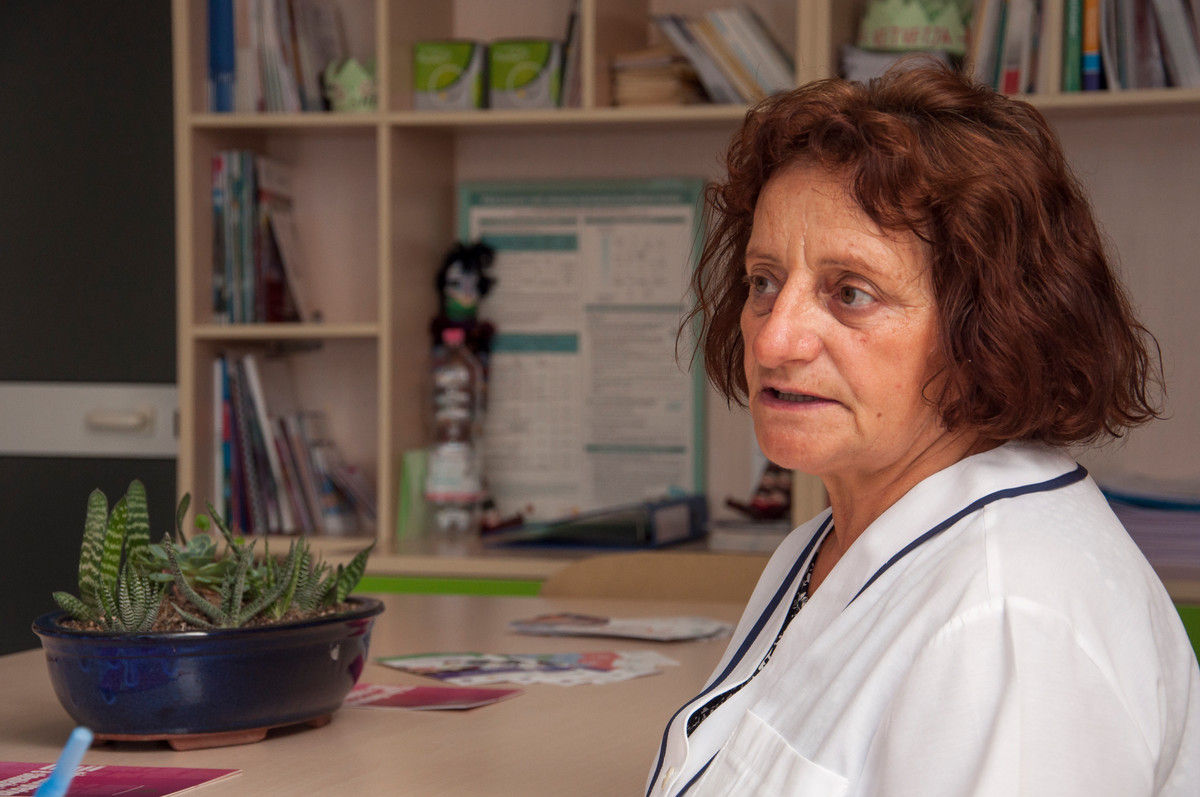
| 18 December 2018
"Many of the women we work with have no health insurance"
Hatixhe Gorenca is a nurse at the Albanian Centre of Population and Development (ACPD) clinic in Tirana. She joined the center in 2013 with 39 years of experience working in gynaecology. During her time as a nurse, she has seen vast improvements in access and services for cervical cancer screenings. However, she says that there is a considerable number of women in rural areas that face difficulties in accessing healthcare, and some that cannot access it at all. Rural women & access “The ACPD clinic is crucial for these [rural] women, because the healthcare we offer through gynaecological visits, includes counselling, pap smears, colposcopies and recently VIA tests and cryotherapy. Services that are totally missing in their areas. What they appreciate most is the mobile clinic in the outskirts of Tirana, because they have an opportunity to meet with doctors and to get information about their health status. We do approximately 17-18 visits per day and the number is always increasing”, Hatixhe says. The clinic has developed a reputation for offering youth-friendly healthcare and information. The confidential and open approach of the clinic is providing access for girls to comprehensive sexual education at an early age, without fear of discrimination or embarrassment. When the clinic first introduced VIA testing in 2017, as an alternative way for the screening of cervical cancer, it was welcomed by the women. “The reason is that compared to pap smears, VIA gives an immediate response on the health of the cervical cells,” Hatixhe explains. “The other reason is economical. Many of the women we work with have no health insurance, as such they cannot benefit from the free tests at maternity hospitals. Furthermore, some of them are vulnerable women and they feel safe when they can get free information and healthcare at our clinic.” What is VIA & Cryotherapy? Show more + Visual inspection of the cervix with acetic acid (VIA) is a process of screening and examining the cervix. Pre-cancerous lesions on the cervix will turn white when the acid is applied. This simple procedure can be done in a clinic setting without the use of a laboratory and allows for immediate treatment of any pre-cancerous lesions with cryotherapy. Cryotherapy is a gynaecological treatment that freezes and destroys abnormal, pre-cancerous cervical cells. Cryotherapy is not a treatment for cervical cancer. VIA has the potential to revolutionize cervical cancer prevention efforts, particularly in low resource settings, because it eliminates the need for laboratories, transportation of specimens and provides immediate test results. VIA needs less equipment and fewer specialists than traditional cervical cancer screening methods like Pap smears. Results from VIA are available immediately so women can be screened and treated in one single visit. ACDP outreach activities enable the staff to give the information where the women are: in the streets, in their workplace, in their homes. Hatixhe has witnessed a growing interest in women regarding their reproductive health in recent years. The number of women that walk through the clinic doors is proof of that. During the 2016-2017 over 3,000 women received healthcare services from the clinic. Encouraging other women “I myself am learning a lot in the clinic”, Hatixhe says. “VIA test was a new technique even for me, but it is so simple, I can now train the staff at the health centers. I can tell you that they are very enthusiastic and responsive because VIA is very easy to apply. Since many health centers have no gynaecological bed for their visits or low capacities to apply PAP tests which require specialized personnel, VIA is much more suitable for their conditions, because it can be done by the nurses or midwifes themselves.” Hatixhe is impressed by the reaction of women taking VIA tests. “As a nurse with long experience in the health sector, I have received many thanks from patients, but the hugs we get from these women are heartfelt. After 2-3 years of coming and going to different institutions, finally, they have found a method which can detect pre-cancer cells, get treatment for it and now they are totally healthy.” Hatixhe says that many women have been encouraged to book a VIA test through hearing about it from a friend or relative who had a positive experience at the clinic. “After the first visit, the women return with other women who are interested to do the tests. This is wonderful.”

| 16 May 2025
"Many of the women we work with have no health insurance"
Hatixhe Gorenca is a nurse at the Albanian Centre of Population and Development (ACPD) clinic in Tirana. She joined the center in 2013 with 39 years of experience working in gynaecology. During her time as a nurse, she has seen vast improvements in access and services for cervical cancer screenings. However, she says that there is a considerable number of women in rural areas that face difficulties in accessing healthcare, and some that cannot access it at all. Rural women & access “The ACPD clinic is crucial for these [rural] women, because the healthcare we offer through gynaecological visits, includes counselling, pap smears, colposcopies and recently VIA tests and cryotherapy. Services that are totally missing in their areas. What they appreciate most is the mobile clinic in the outskirts of Tirana, because they have an opportunity to meet with doctors and to get information about their health status. We do approximately 17-18 visits per day and the number is always increasing”, Hatixhe says. The clinic has developed a reputation for offering youth-friendly healthcare and information. The confidential and open approach of the clinic is providing access for girls to comprehensive sexual education at an early age, without fear of discrimination or embarrassment. When the clinic first introduced VIA testing in 2017, as an alternative way for the screening of cervical cancer, it was welcomed by the women. “The reason is that compared to pap smears, VIA gives an immediate response on the health of the cervical cells,” Hatixhe explains. “The other reason is economical. Many of the women we work with have no health insurance, as such they cannot benefit from the free tests at maternity hospitals. Furthermore, some of them are vulnerable women and they feel safe when they can get free information and healthcare at our clinic.” What is VIA & Cryotherapy? Show more + Visual inspection of the cervix with acetic acid (VIA) is a process of screening and examining the cervix. Pre-cancerous lesions on the cervix will turn white when the acid is applied. This simple procedure can be done in a clinic setting without the use of a laboratory and allows for immediate treatment of any pre-cancerous lesions with cryotherapy. Cryotherapy is a gynaecological treatment that freezes and destroys abnormal, pre-cancerous cervical cells. Cryotherapy is not a treatment for cervical cancer. VIA has the potential to revolutionize cervical cancer prevention efforts, particularly in low resource settings, because it eliminates the need for laboratories, transportation of specimens and provides immediate test results. VIA needs less equipment and fewer specialists than traditional cervical cancer screening methods like Pap smears. Results from VIA are available immediately so women can be screened and treated in one single visit. ACDP outreach activities enable the staff to give the information where the women are: in the streets, in their workplace, in their homes. Hatixhe has witnessed a growing interest in women regarding their reproductive health in recent years. The number of women that walk through the clinic doors is proof of that. During the 2016-2017 over 3,000 women received healthcare services from the clinic. Encouraging other women “I myself am learning a lot in the clinic”, Hatixhe says. “VIA test was a new technique even for me, but it is so simple, I can now train the staff at the health centers. I can tell you that they are very enthusiastic and responsive because VIA is very easy to apply. Since many health centers have no gynaecological bed for their visits or low capacities to apply PAP tests which require specialized personnel, VIA is much more suitable for their conditions, because it can be done by the nurses or midwifes themselves.” Hatixhe is impressed by the reaction of women taking VIA tests. “As a nurse with long experience in the health sector, I have received many thanks from patients, but the hugs we get from these women are heartfelt. After 2-3 years of coming and going to different institutions, finally, they have found a method which can detect pre-cancer cells, get treatment for it and now they are totally healthy.” Hatixhe says that many women have been encouraged to book a VIA test through hearing about it from a friend or relative who had a positive experience at the clinic. “After the first visit, the women return with other women who are interested to do the tests. This is wonderful.”
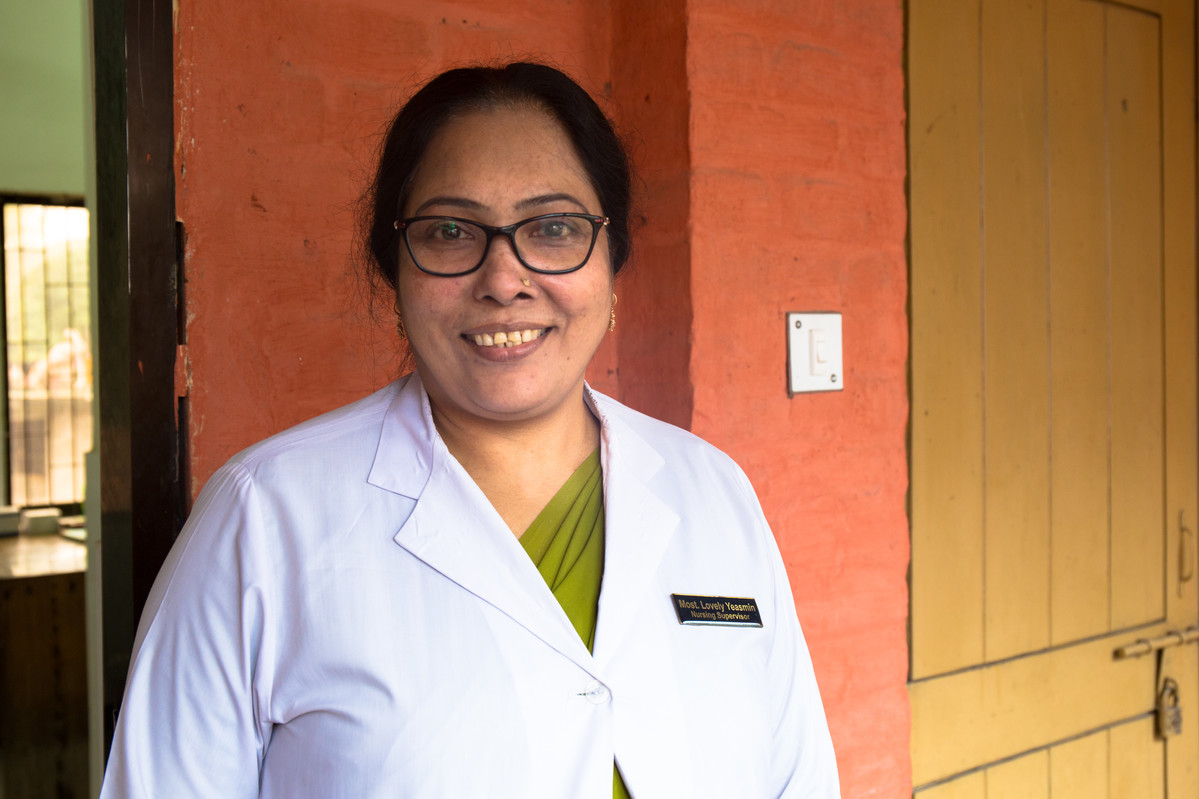
| 08 February 2018
"...now I can provide MR (menstrual regulation) services efficiently."
Menstrual regulation, the method of establishing non-pregnancy for a woman at risk of unintended pregnancy, has been a part of Bangladesh’s family planning program since 1979. It is allowed up to 10 –12 weeks after a woman’s last menstrual period. Nursing Supervisor Ms. Lovely Yasmin is one of several staff members providing family planning, menstrual regulation, and post-procedure care services at Upzila Health Complex in Belkuchi, Bangladesh. “Before this training we used to sometimes advise people on such services and provided menstrual regulation (MR) services but after the training I’ve have become and confident and efficient in providing MR services,” she says. “Earlier there could possibly have been mistake but now I can provide MR services efficiently and perfectly. I can now provide MR services in more organized manner.” But while Yasmin, who has worked in family planning for 16 years, says that the recent training has increased her confidence in properly doing MR procedures, the health complex still lacks basic supplies. “There were difficulties due to limited equipment,” she says. “We sometimes have to use personal equipment.” But, she says, the presence of Kit 8 has made life easier. “Prior to this kit, many clients did not complete the full course of medical as advices due to financial issues… during floods there are many hardships including financial difficulty,” she says. “However with this kit, most of the medicines are provided and clients are easily managing on their own.”

| 16 May 2025
"...now I can provide MR (menstrual regulation) services efficiently."
Menstrual regulation, the method of establishing non-pregnancy for a woman at risk of unintended pregnancy, has been a part of Bangladesh’s family planning program since 1979. It is allowed up to 10 –12 weeks after a woman’s last menstrual period. Nursing Supervisor Ms. Lovely Yasmin is one of several staff members providing family planning, menstrual regulation, and post-procedure care services at Upzila Health Complex in Belkuchi, Bangladesh. “Before this training we used to sometimes advise people on such services and provided menstrual regulation (MR) services but after the training I’ve have become and confident and efficient in providing MR services,” she says. “Earlier there could possibly have been mistake but now I can provide MR services efficiently and perfectly. I can now provide MR services in more organized manner.” But while Yasmin, who has worked in family planning for 16 years, says that the recent training has increased her confidence in properly doing MR procedures, the health complex still lacks basic supplies. “There were difficulties due to limited equipment,” she says. “We sometimes have to use personal equipment.” But, she says, the presence of Kit 8 has made life easier. “Prior to this kit, many clients did not complete the full course of medical as advices due to financial issues… during floods there are many hardships including financial difficulty,” she says. “However with this kit, most of the medicines are provided and clients are easily managing on their own.”
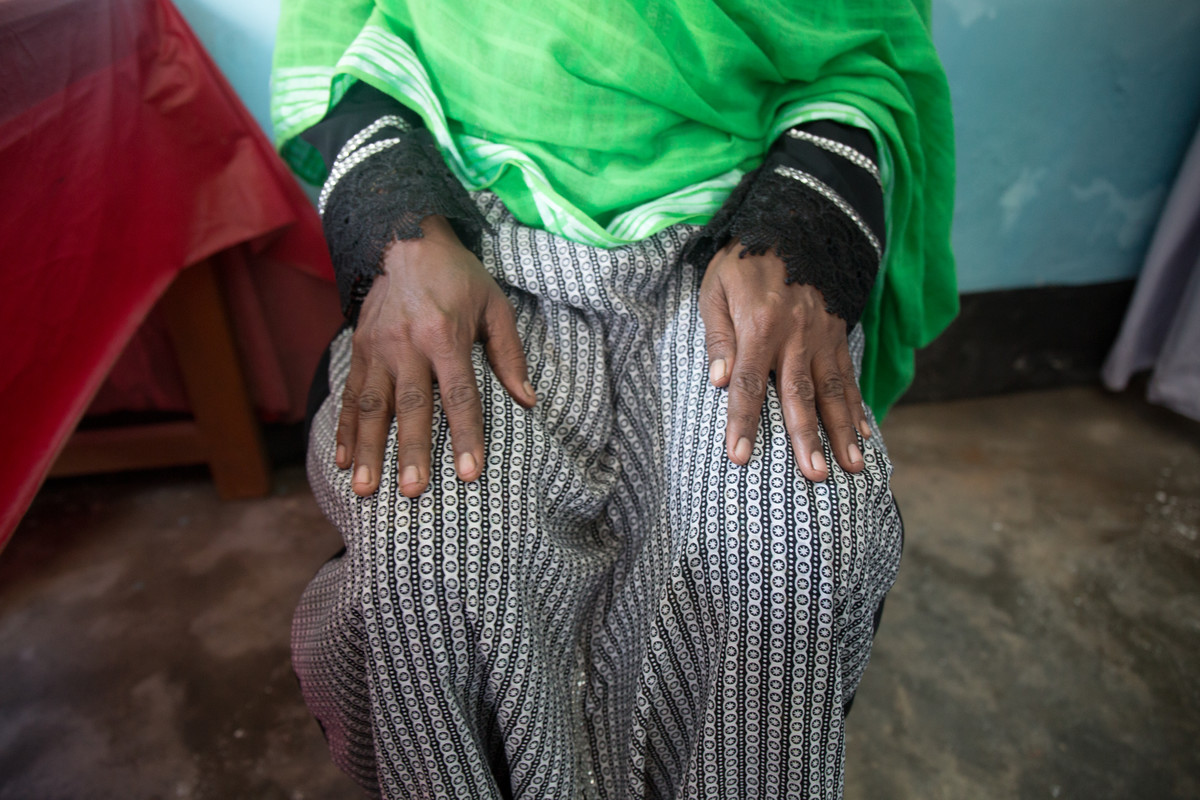
| 08 February 2018
“After the menstrual regulations services I was prescribed a few medicines which I could not buy due to poor financial condition”
Menstrual regulation, the method of establishing non-pregnancy for a woman at risk of unintended pregnancy, has been a part of Bangladesh’s family planning program since 1979. It is allowed up to 10 –12 weeks after a woman’s last menstrual period. When Shana Khatun, a mother of three, became pregnant again she says she began to feel very weak and had issues with massive bleeding.Citing her age and the possibility of further medical complications, Khatun decided to undergo a menstrual regulation procedure. “But if the hospital and services weren’t there then I would have had to have continued with my pregnancy, even when (I do) not want another child” she says. Khatun says that the procedure went well, but that without the presence of medicine found in Kit 8 she would have lacked post-operation medicine. “After the menstrual regulations services I was prescribed a few medicines which I could not buy due to poor financial condition,” she says. “But the hospital gave me a number of medicines that I could take.” And while Khatun had talked with women about various family planning methods, she didn’t feel she could talk with anyone aside from her husband about getting the procedure. “I feared they would treat me poorly (the hospital),” she says. But Kahtun says she found the hospital trustworthy and helpful, even when she was suffering complications such as mass bleeding. “I will be very cautious that I should not get pregnant again however in event if I get pregnant again then I will come to this hospital only,” she says.

| 16 May 2025
“After the menstrual regulations services I was prescribed a few medicines which I could not buy due to poor financial condition”
Menstrual regulation, the method of establishing non-pregnancy for a woman at risk of unintended pregnancy, has been a part of Bangladesh’s family planning program since 1979. It is allowed up to 10 –12 weeks after a woman’s last menstrual period. When Shana Khatun, a mother of three, became pregnant again she says she began to feel very weak and had issues with massive bleeding.Citing her age and the possibility of further medical complications, Khatun decided to undergo a menstrual regulation procedure. “But if the hospital and services weren’t there then I would have had to have continued with my pregnancy, even when (I do) not want another child” she says. Khatun says that the procedure went well, but that without the presence of medicine found in Kit 8 she would have lacked post-operation medicine. “After the menstrual regulations services I was prescribed a few medicines which I could not buy due to poor financial condition,” she says. “But the hospital gave me a number of medicines that I could take.” And while Khatun had talked with women about various family planning methods, she didn’t feel she could talk with anyone aside from her husband about getting the procedure. “I feared they would treat me poorly (the hospital),” she says. But Kahtun says she found the hospital trustworthy and helpful, even when she was suffering complications such as mass bleeding. “I will be very cautious that I should not get pregnant again however in event if I get pregnant again then I will come to this hospital only,” she says.
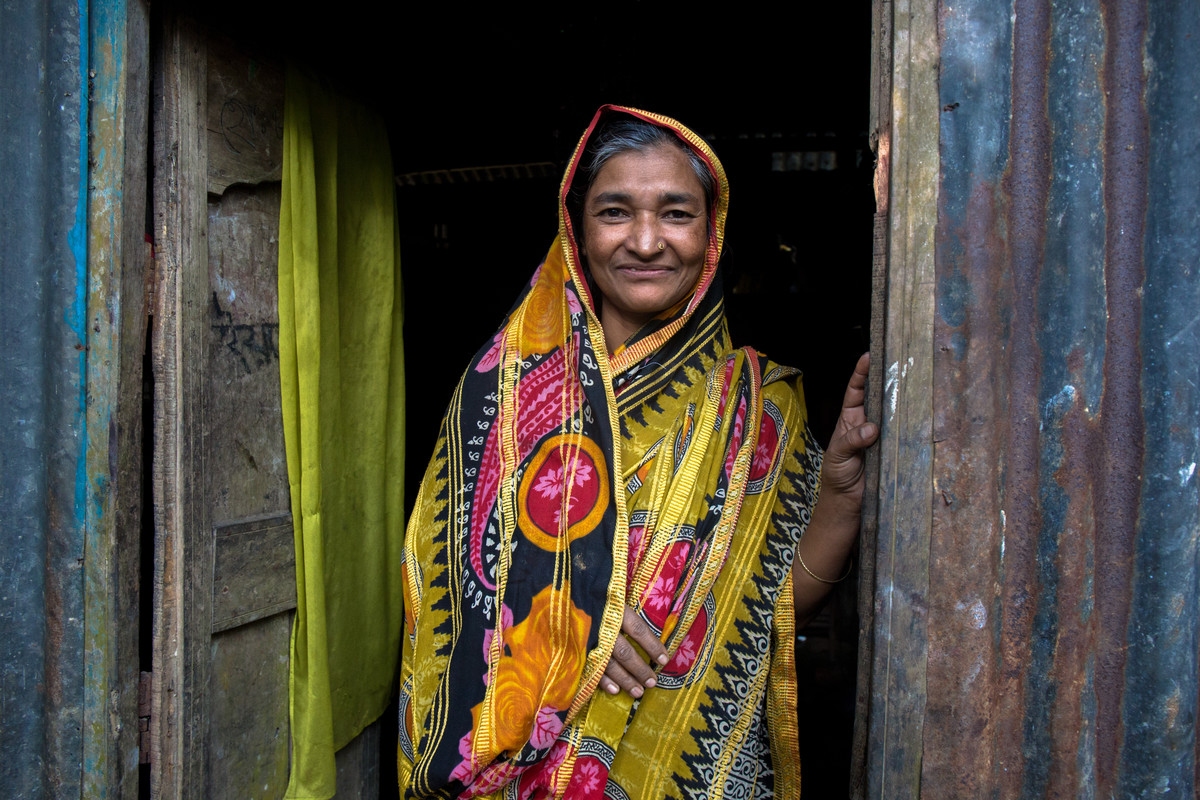
| 08 February 2018
“My spouse was supportive and he gave me the freedom to come to this decision myself”
Menstrual regulation, the method of establishing non-pregnancy for a woman at risk of unintended pregnancy, has been a part of Bangladesh’s family planning program since 1979. It is allowed up to 10 –12 weeks after a woman’s last menstrual period. Auliya Khatun, a mother of three children, was 40 years old when she found out that she had unintentionally become pregnant again. Khatun says she had heard about family planning services and menstrual regulation services available at the Upzila Health Complex from other women in her small village. She discussed the option of undergoing menstrual regulation with her husband. “My spouse was supportive and he gave me the freedom to come to this decision myself,” Khatun says. “If this service was not available then I would have carried on with the pregnancy. It would have been embarrassing, though,” she explains. “It is embarrassing to have another child at this age.” Khatun, who sometimes assists her husband with work in a local handloom, also cited the financial burden another child would have on her family. “We are facing financial difficulty so it is not possible to have another child.” Khatun says she only experienced mild gastric discomfort after the procedure but felt assured about her recovery due to being able to check-in with doctors at the local health centre. The access to the services and doctors, she says, was a major factor in a smooth and easy recovery. “Since this service was in a government facility I could prevail [through] this and survive,” she says. “It is an important service.”

| 16 May 2025
“My spouse was supportive and he gave me the freedom to come to this decision myself”
Menstrual regulation, the method of establishing non-pregnancy for a woman at risk of unintended pregnancy, has been a part of Bangladesh’s family planning program since 1979. It is allowed up to 10 –12 weeks after a woman’s last menstrual period. Auliya Khatun, a mother of three children, was 40 years old when she found out that she had unintentionally become pregnant again. Khatun says she had heard about family planning services and menstrual regulation services available at the Upzila Health Complex from other women in her small village. She discussed the option of undergoing menstrual regulation with her husband. “My spouse was supportive and he gave me the freedom to come to this decision myself,” Khatun says. “If this service was not available then I would have carried on with the pregnancy. It would have been embarrassing, though,” she explains. “It is embarrassing to have another child at this age.” Khatun, who sometimes assists her husband with work in a local handloom, also cited the financial burden another child would have on her family. “We are facing financial difficulty so it is not possible to have another child.” Khatun says she only experienced mild gastric discomfort after the procedure but felt assured about her recovery due to being able to check-in with doctors at the local health centre. The access to the services and doctors, she says, was a major factor in a smooth and easy recovery. “Since this service was in a government facility I could prevail [through] this and survive,” she says. “It is an important service.”

| 19 December 2018
"I decided to do cryotherapy. It was the best decision I have made in my life."
With three children to raise on her own, Liljana’s health was the last thing on her mind but she could no longer ignore the feeling that something was wrong. Through speaking to her friends, she learnt about the Albanian Centre of Population and Development (ACDP) clinic. “First, I had the gynaecological visit and after that, for 1 minute, the doctor did the VIA test. The response was immediate, but positive. I was so scared. The doctor was able to calm me down by explaining everything very simply. Everything was going to be all right because this disease was 100% curable.” Liljana underwent treatment for pre-cancerous lesions for two weeks, but the results of the test were still positive. The doctor suggested cryotherapy. “I decided to do cryotherapy, which is very simple and very comfortable. It was the best decision I have made in my life. After two years, I am completely recovered. I am very grateful to the ACDP clinic, they saved my life.” What is VIA & Cryotherapy? Show more + Visual inspection of the cervix with acetic acid (VIA) is a process of screening and examining the cervix. Pre-cancerous lesions on the cervix will turn white when the acid is applied. This simple procedure can be done in a clinic setting without the use of a laboratory and allows for immediate treatment of any pre-cancerous lesions with cryotherapy. Cryotherapy is a gynaecological treatment that freezes and destroys abnormal, pre-cancerous cervical cells. Cryotherapy is not a treatment for cervical cancer. VIA has the potential to revolutionize cervical cancer prevention efforts, particularly in low resource settings, because it eliminates the need for laboratories, transportation of specimens and provides immediate test results. VIA needs less equipment and fewer specialists than traditional cervical cancer screening methods like Pap tests. Results from VIA are available immediately so women can be screened and treated in one single visit. A happier & healthier life Now Liljana is having routine checks following the advice of the doctor and maintains regular contact with the clinic. “I know that whenever I need advice, I can call the doctor or the nurse and always get a response.” Liljana told all her friends about the VIA procedure and recommended many of them to the clinic in Tirana. Since her successful treatment, Liljana has noticed the relationship with her children has also improved. “My 15 years daughter says that now I smile more than before. She has noticed that before the test I was sad, because I was thinking bad things about my life. This experience has helped me also to talk openly with my daughter about the reproductive and sexual life and teach her to take care of herself. The other two are boys, 13 and 10 years old, but I promise I will talk to them about the importance of having a healthy reproductive and sexual life.”

| 16 May 2025
"I decided to do cryotherapy. It was the best decision I have made in my life."
With three children to raise on her own, Liljana’s health was the last thing on her mind but she could no longer ignore the feeling that something was wrong. Through speaking to her friends, she learnt about the Albanian Centre of Population and Development (ACDP) clinic. “First, I had the gynaecological visit and after that, for 1 minute, the doctor did the VIA test. The response was immediate, but positive. I was so scared. The doctor was able to calm me down by explaining everything very simply. Everything was going to be all right because this disease was 100% curable.” Liljana underwent treatment for pre-cancerous lesions for two weeks, but the results of the test were still positive. The doctor suggested cryotherapy. “I decided to do cryotherapy, which is very simple and very comfortable. It was the best decision I have made in my life. After two years, I am completely recovered. I am very grateful to the ACDP clinic, they saved my life.” What is VIA & Cryotherapy? Show more + Visual inspection of the cervix with acetic acid (VIA) is a process of screening and examining the cervix. Pre-cancerous lesions on the cervix will turn white when the acid is applied. This simple procedure can be done in a clinic setting without the use of a laboratory and allows for immediate treatment of any pre-cancerous lesions with cryotherapy. Cryotherapy is a gynaecological treatment that freezes and destroys abnormal, pre-cancerous cervical cells. Cryotherapy is not a treatment for cervical cancer. VIA has the potential to revolutionize cervical cancer prevention efforts, particularly in low resource settings, because it eliminates the need for laboratories, transportation of specimens and provides immediate test results. VIA needs less equipment and fewer specialists than traditional cervical cancer screening methods like Pap tests. Results from VIA are available immediately so women can be screened and treated in one single visit. A happier & healthier life Now Liljana is having routine checks following the advice of the doctor and maintains regular contact with the clinic. “I know that whenever I need advice, I can call the doctor or the nurse and always get a response.” Liljana told all her friends about the VIA procedure and recommended many of them to the clinic in Tirana. Since her successful treatment, Liljana has noticed the relationship with her children has also improved. “My 15 years daughter says that now I smile more than before. She has noticed that before the test I was sad, because I was thinking bad things about my life. This experience has helped me also to talk openly with my daughter about the reproductive and sexual life and teach her to take care of herself. The other two are boys, 13 and 10 years old, but I promise I will talk to them about the importance of having a healthy reproductive and sexual life.”

| 19 December 2018
"Nowadays I feel much better and I am clean from signs of cancer”
Eleanor* is a mother of three children, she lives in Vlora, a city in south Albania. Eleanor and her children rely on her husband's modest income to survive. She is only too aware that her economic situation is a major barrier for her to access healthcare. Most treatments are referred to the capital, Tirana, or are at private clinics; incurring costs she simply cannot afford. When she heard about the Aulona Centre offering free PAP tests, she booked an appointment. “I have always admired women who take care of their health. Taking care of ourselves is decisive for our family wellbeing, children and relatives. But in our areas, it is difficult to get proper services, especially for reproductive health”, she says. Eleanor’s first pap smear was in 2012, the results came back negative. The doctor informed her that she had to come back in 3 years for another test. In 2015 she returned to the center, convinced that the results would again be negative. The results came back positive. “I remember the doctor underlining my name with red pen. She said to go to Tirana for further treatment because they had better equipment and staff there.” The encouragement from the staff of Aulona center helped Eleanor decide on her next steps. “While making my decision, I had this vision of my name underlined with red colour, which was an alert sign. So I contacted a doctor in Tirana and had the surgery in 2016. Nowadays I feel much better and I am clean from signs of cancer.” From a client to an activist Her experience with Aulona center has made Eleanor an ardent activist of reproductive health for women. “Every cousin in my family knows about my case. I encourage them to have a PAP screening although they don’t have any concern. For some of them is a matter of shame, because they think if you don’t have any problem, why you should expose intimate parts of your body to the doctor? I challenge them asking what it is more difficult: when the doctor says: Madam, you have few years to live left or just booking a visit? They listen to me more now because they see I recovered.” Through her activism, Eleanor has recently become aware of the VIA testing method and is enthusiastic about it. “The most wonderful thing about this new method [VIA] is that I don’t have to wait 3 weeks for the response. I recall the waiting period for the second test with my eyes attached to the telephone screen. Why are they not calling? Is there anything wrong with my results? VIA avoid all this anxiety, and you can start the therapy immediately.” Eleanor feels confident about her knowledge on sexual and reproductive health. Her own experiences allows her speak more openly with her 20-year-old old daughter, reminding her of the importance of regular screening. “The disease does not ask if you are rich or poor. I could have let myself at risk, but when interventions are at the right time, they save lives.” What is VIA & Cryotherapy? Show more + Visual inspection of the cervix with acetic acid (VIA) is a process of screening and examining the cervix. Pre-cancerous lesions on the cervix will turn white when the acid is applied. This simple procedure can be done in a clinic setting without the use of a laboratory and allows for immediate treatment of any pre-cancerous lesions with cryotherapy. Cryotherapy is a gynaecological treatment that freezes and destroys abnormal, pre-cancerous cervical cells. Cryotherapy is not a treatment for cervical cancer. VIA has the potential to revolutionize cervical cancer prevention efforts, particularly in low resource settings, because it eliminates the need for laboratories, transportation of specimens and provides immediate test results. VIA needs less equipment and fewer specialists than traditional cervical cancer screening methods like Pap tests. Results from VIA are available immediately so women can be screened and treated in one single visit. *Name has been changed

| 16 May 2025
"Nowadays I feel much better and I am clean from signs of cancer”
Eleanor* is a mother of three children, she lives in Vlora, a city in south Albania. Eleanor and her children rely on her husband's modest income to survive. She is only too aware that her economic situation is a major barrier for her to access healthcare. Most treatments are referred to the capital, Tirana, or are at private clinics; incurring costs she simply cannot afford. When she heard about the Aulona Centre offering free PAP tests, she booked an appointment. “I have always admired women who take care of their health. Taking care of ourselves is decisive for our family wellbeing, children and relatives. But in our areas, it is difficult to get proper services, especially for reproductive health”, she says. Eleanor’s first pap smear was in 2012, the results came back negative. The doctor informed her that she had to come back in 3 years for another test. In 2015 she returned to the center, convinced that the results would again be negative. The results came back positive. “I remember the doctor underlining my name with red pen. She said to go to Tirana for further treatment because they had better equipment and staff there.” The encouragement from the staff of Aulona center helped Eleanor decide on her next steps. “While making my decision, I had this vision of my name underlined with red colour, which was an alert sign. So I contacted a doctor in Tirana and had the surgery in 2016. Nowadays I feel much better and I am clean from signs of cancer.” From a client to an activist Her experience with Aulona center has made Eleanor an ardent activist of reproductive health for women. “Every cousin in my family knows about my case. I encourage them to have a PAP screening although they don’t have any concern. For some of them is a matter of shame, because they think if you don’t have any problem, why you should expose intimate parts of your body to the doctor? I challenge them asking what it is more difficult: when the doctor says: Madam, you have few years to live left or just booking a visit? They listen to me more now because they see I recovered.” Through her activism, Eleanor has recently become aware of the VIA testing method and is enthusiastic about it. “The most wonderful thing about this new method [VIA] is that I don’t have to wait 3 weeks for the response. I recall the waiting period for the second test with my eyes attached to the telephone screen. Why are they not calling? Is there anything wrong with my results? VIA avoid all this anxiety, and you can start the therapy immediately.” Eleanor feels confident about her knowledge on sexual and reproductive health. Her own experiences allows her speak more openly with her 20-year-old old daughter, reminding her of the importance of regular screening. “The disease does not ask if you are rich or poor. I could have let myself at risk, but when interventions are at the right time, they save lives.” What is VIA & Cryotherapy? Show more + Visual inspection of the cervix with acetic acid (VIA) is a process of screening and examining the cervix. Pre-cancerous lesions on the cervix will turn white when the acid is applied. This simple procedure can be done in a clinic setting without the use of a laboratory and allows for immediate treatment of any pre-cancerous lesions with cryotherapy. Cryotherapy is a gynaecological treatment that freezes and destroys abnormal, pre-cancerous cervical cells. Cryotherapy is not a treatment for cervical cancer. VIA has the potential to revolutionize cervical cancer prevention efforts, particularly in low resource settings, because it eliminates the need for laboratories, transportation of specimens and provides immediate test results. VIA needs less equipment and fewer specialists than traditional cervical cancer screening methods like Pap tests. Results from VIA are available immediately so women can be screened and treated in one single visit. *Name has been changed

| 18 December 2018
"I do this work because I believe every girl and woman’s life counts.”
Scrolling through her social media page, 21-year-old Artemisa Seraj stumbled across a post from the Aulona Center offering seminars and workshops on sexual and reproductive healthcare for young people and students. Feeling like she had the opportunity to learn something about a subject that she and her friends rarely discuss, she decided to attend one of the seminars. “I found the information very interesting because we don’t talk very much about these things with my friends. It is still a taboo. On the other hand, we know that the sexually transmitted infections are being spread among youngsters, but we don’t know how to protect ourselves.” The first seminar went so well, Artemisa decided that she wanted to become a volunteer. “I like very much to pass the information on to others. So, I discussed with the Enela, the director of the center, to become a volunteer and here I am today.” Empowering women & girls Since becoming an activist Artemisa is now even more passionate about the importance of comprehensive sexuality education (CSE) for young people, gender equality and women’s rights. “I have known many other girls and women in our outreach activities that have no information about their reproductive and sexual life. Especially, girls from rural areas are the most deprived of this kind of information. The health centers have no staff or adequate equipment for gynaecological visits. Aulona center has high standards of friendly services for teenagers and youngsters, so you feel safe and not prejudiced against. Confidentiality is very high here and the doctors are very qualified. In the young groups, you feel like a community, you can speak openly about your concerns.” Artemisa hopes that by distributing information to women and girls, it is empowering them as well giving them an opportunity to fight for their own rights. “I do think that even a single person can contribute to the improvement of the situation regarding CSE. It is an instinct now, whenever I meet a woman, I talk about the center. My greatest satisfaction as an activist is seeing them coming to the center for a [health] visit or for counselling, because this means that my work has paid off. I do this work because I believe every girl and woman’s life counts.”

| 16 May 2025
"I do this work because I believe every girl and woman’s life counts.”
Scrolling through her social media page, 21-year-old Artemisa Seraj stumbled across a post from the Aulona Center offering seminars and workshops on sexual and reproductive healthcare for young people and students. Feeling like she had the opportunity to learn something about a subject that she and her friends rarely discuss, she decided to attend one of the seminars. “I found the information very interesting because we don’t talk very much about these things with my friends. It is still a taboo. On the other hand, we know that the sexually transmitted infections are being spread among youngsters, but we don’t know how to protect ourselves.” The first seminar went so well, Artemisa decided that she wanted to become a volunteer. “I like very much to pass the information on to others. So, I discussed with the Enela, the director of the center, to become a volunteer and here I am today.” Empowering women & girls Since becoming an activist Artemisa is now even more passionate about the importance of comprehensive sexuality education (CSE) for young people, gender equality and women’s rights. “I have known many other girls and women in our outreach activities that have no information about their reproductive and sexual life. Especially, girls from rural areas are the most deprived of this kind of information. The health centers have no staff or adequate equipment for gynaecological visits. Aulona center has high standards of friendly services for teenagers and youngsters, so you feel safe and not prejudiced against. Confidentiality is very high here and the doctors are very qualified. In the young groups, you feel like a community, you can speak openly about your concerns.” Artemisa hopes that by distributing information to women and girls, it is empowering them as well giving them an opportunity to fight for their own rights. “I do think that even a single person can contribute to the improvement of the situation regarding CSE. It is an instinct now, whenever I meet a woman, I talk about the center. My greatest satisfaction as an activist is seeing them coming to the center for a [health] visit or for counselling, because this means that my work has paid off. I do this work because I believe every girl and woman’s life counts.”

| 18 December 2018
"Many of the women we work with have no health insurance"
Hatixhe Gorenca is a nurse at the Albanian Centre of Population and Development (ACPD) clinic in Tirana. She joined the center in 2013 with 39 years of experience working in gynaecology. During her time as a nurse, she has seen vast improvements in access and services for cervical cancer screenings. However, she says that there is a considerable number of women in rural areas that face difficulties in accessing healthcare, and some that cannot access it at all. Rural women & access “The ACPD clinic is crucial for these [rural] women, because the healthcare we offer through gynaecological visits, includes counselling, pap smears, colposcopies and recently VIA tests and cryotherapy. Services that are totally missing in their areas. What they appreciate most is the mobile clinic in the outskirts of Tirana, because they have an opportunity to meet with doctors and to get information about their health status. We do approximately 17-18 visits per day and the number is always increasing”, Hatixhe says. The clinic has developed a reputation for offering youth-friendly healthcare and information. The confidential and open approach of the clinic is providing access for girls to comprehensive sexual education at an early age, without fear of discrimination or embarrassment. When the clinic first introduced VIA testing in 2017, as an alternative way for the screening of cervical cancer, it was welcomed by the women. “The reason is that compared to pap smears, VIA gives an immediate response on the health of the cervical cells,” Hatixhe explains. “The other reason is economical. Many of the women we work with have no health insurance, as such they cannot benefit from the free tests at maternity hospitals. Furthermore, some of them are vulnerable women and they feel safe when they can get free information and healthcare at our clinic.” What is VIA & Cryotherapy? Show more + Visual inspection of the cervix with acetic acid (VIA) is a process of screening and examining the cervix. Pre-cancerous lesions on the cervix will turn white when the acid is applied. This simple procedure can be done in a clinic setting without the use of a laboratory and allows for immediate treatment of any pre-cancerous lesions with cryotherapy. Cryotherapy is a gynaecological treatment that freezes and destroys abnormal, pre-cancerous cervical cells. Cryotherapy is not a treatment for cervical cancer. VIA has the potential to revolutionize cervical cancer prevention efforts, particularly in low resource settings, because it eliminates the need for laboratories, transportation of specimens and provides immediate test results. VIA needs less equipment and fewer specialists than traditional cervical cancer screening methods like Pap smears. Results from VIA are available immediately so women can be screened and treated in one single visit. ACDP outreach activities enable the staff to give the information where the women are: in the streets, in their workplace, in their homes. Hatixhe has witnessed a growing interest in women regarding their reproductive health in recent years. The number of women that walk through the clinic doors is proof of that. During the 2016-2017 over 3,000 women received healthcare services from the clinic. Encouraging other women “I myself am learning a lot in the clinic”, Hatixhe says. “VIA test was a new technique even for me, but it is so simple, I can now train the staff at the health centers. I can tell you that they are very enthusiastic and responsive because VIA is very easy to apply. Since many health centers have no gynaecological bed for their visits or low capacities to apply PAP tests which require specialized personnel, VIA is much more suitable for their conditions, because it can be done by the nurses or midwifes themselves.” Hatixhe is impressed by the reaction of women taking VIA tests. “As a nurse with long experience in the health sector, I have received many thanks from patients, but the hugs we get from these women are heartfelt. After 2-3 years of coming and going to different institutions, finally, they have found a method which can detect pre-cancer cells, get treatment for it and now they are totally healthy.” Hatixhe says that many women have been encouraged to book a VIA test through hearing about it from a friend or relative who had a positive experience at the clinic. “After the first visit, the women return with other women who are interested to do the tests. This is wonderful.”

| 16 May 2025
"Many of the women we work with have no health insurance"
Hatixhe Gorenca is a nurse at the Albanian Centre of Population and Development (ACPD) clinic in Tirana. She joined the center in 2013 with 39 years of experience working in gynaecology. During her time as a nurse, she has seen vast improvements in access and services for cervical cancer screenings. However, she says that there is a considerable number of women in rural areas that face difficulties in accessing healthcare, and some that cannot access it at all. Rural women & access “The ACPD clinic is crucial for these [rural] women, because the healthcare we offer through gynaecological visits, includes counselling, pap smears, colposcopies and recently VIA tests and cryotherapy. Services that are totally missing in their areas. What they appreciate most is the mobile clinic in the outskirts of Tirana, because they have an opportunity to meet with doctors and to get information about their health status. We do approximately 17-18 visits per day and the number is always increasing”, Hatixhe says. The clinic has developed a reputation for offering youth-friendly healthcare and information. The confidential and open approach of the clinic is providing access for girls to comprehensive sexual education at an early age, without fear of discrimination or embarrassment. When the clinic first introduced VIA testing in 2017, as an alternative way for the screening of cervical cancer, it was welcomed by the women. “The reason is that compared to pap smears, VIA gives an immediate response on the health of the cervical cells,” Hatixhe explains. “The other reason is economical. Many of the women we work with have no health insurance, as such they cannot benefit from the free tests at maternity hospitals. Furthermore, some of them are vulnerable women and they feel safe when they can get free information and healthcare at our clinic.” What is VIA & Cryotherapy? Show more + Visual inspection of the cervix with acetic acid (VIA) is a process of screening and examining the cervix. Pre-cancerous lesions on the cervix will turn white when the acid is applied. This simple procedure can be done in a clinic setting without the use of a laboratory and allows for immediate treatment of any pre-cancerous lesions with cryotherapy. Cryotherapy is a gynaecological treatment that freezes and destroys abnormal, pre-cancerous cervical cells. Cryotherapy is not a treatment for cervical cancer. VIA has the potential to revolutionize cervical cancer prevention efforts, particularly in low resource settings, because it eliminates the need for laboratories, transportation of specimens and provides immediate test results. VIA needs less equipment and fewer specialists than traditional cervical cancer screening methods like Pap smears. Results from VIA are available immediately so women can be screened and treated in one single visit. ACDP outreach activities enable the staff to give the information where the women are: in the streets, in their workplace, in their homes. Hatixhe has witnessed a growing interest in women regarding their reproductive health in recent years. The number of women that walk through the clinic doors is proof of that. During the 2016-2017 over 3,000 women received healthcare services from the clinic. Encouraging other women “I myself am learning a lot in the clinic”, Hatixhe says. “VIA test was a new technique even for me, but it is so simple, I can now train the staff at the health centers. I can tell you that they are very enthusiastic and responsive because VIA is very easy to apply. Since many health centers have no gynaecological bed for their visits or low capacities to apply PAP tests which require specialized personnel, VIA is much more suitable for their conditions, because it can be done by the nurses or midwifes themselves.” Hatixhe is impressed by the reaction of women taking VIA tests. “As a nurse with long experience in the health sector, I have received many thanks from patients, but the hugs we get from these women are heartfelt. After 2-3 years of coming and going to different institutions, finally, they have found a method which can detect pre-cancer cells, get treatment for it and now they are totally healthy.” Hatixhe says that many women have been encouraged to book a VIA test through hearing about it from a friend or relative who had a positive experience at the clinic. “After the first visit, the women return with other women who are interested to do the tests. This is wonderful.”

| 08 February 2018
"...now I can provide MR (menstrual regulation) services efficiently."
Menstrual regulation, the method of establishing non-pregnancy for a woman at risk of unintended pregnancy, has been a part of Bangladesh’s family planning program since 1979. It is allowed up to 10 –12 weeks after a woman’s last menstrual period. Nursing Supervisor Ms. Lovely Yasmin is one of several staff members providing family planning, menstrual regulation, and post-procedure care services at Upzila Health Complex in Belkuchi, Bangladesh. “Before this training we used to sometimes advise people on such services and provided menstrual regulation (MR) services but after the training I’ve have become and confident and efficient in providing MR services,” she says. “Earlier there could possibly have been mistake but now I can provide MR services efficiently and perfectly. I can now provide MR services in more organized manner.” But while Yasmin, who has worked in family planning for 16 years, says that the recent training has increased her confidence in properly doing MR procedures, the health complex still lacks basic supplies. “There were difficulties due to limited equipment,” she says. “We sometimes have to use personal equipment.” But, she says, the presence of Kit 8 has made life easier. “Prior to this kit, many clients did not complete the full course of medical as advices due to financial issues… during floods there are many hardships including financial difficulty,” she says. “However with this kit, most of the medicines are provided and clients are easily managing on their own.”

| 16 May 2025
"...now I can provide MR (menstrual regulation) services efficiently."
Menstrual regulation, the method of establishing non-pregnancy for a woman at risk of unintended pregnancy, has been a part of Bangladesh’s family planning program since 1979. It is allowed up to 10 –12 weeks after a woman’s last menstrual period. Nursing Supervisor Ms. Lovely Yasmin is one of several staff members providing family planning, menstrual regulation, and post-procedure care services at Upzila Health Complex in Belkuchi, Bangladesh. “Before this training we used to sometimes advise people on such services and provided menstrual regulation (MR) services but after the training I’ve have become and confident and efficient in providing MR services,” she says. “Earlier there could possibly have been mistake but now I can provide MR services efficiently and perfectly. I can now provide MR services in more organized manner.” But while Yasmin, who has worked in family planning for 16 years, says that the recent training has increased her confidence in properly doing MR procedures, the health complex still lacks basic supplies. “There were difficulties due to limited equipment,” she says. “We sometimes have to use personal equipment.” But, she says, the presence of Kit 8 has made life easier. “Prior to this kit, many clients did not complete the full course of medical as advices due to financial issues… during floods there are many hardships including financial difficulty,” she says. “However with this kit, most of the medicines are provided and clients are easily managing on their own.”

| 08 February 2018
“After the menstrual regulations services I was prescribed a few medicines which I could not buy due to poor financial condition”
Menstrual regulation, the method of establishing non-pregnancy for a woman at risk of unintended pregnancy, has been a part of Bangladesh’s family planning program since 1979. It is allowed up to 10 –12 weeks after a woman’s last menstrual period. When Shana Khatun, a mother of three, became pregnant again she says she began to feel very weak and had issues with massive bleeding.Citing her age and the possibility of further medical complications, Khatun decided to undergo a menstrual regulation procedure. “But if the hospital and services weren’t there then I would have had to have continued with my pregnancy, even when (I do) not want another child” she says. Khatun says that the procedure went well, but that without the presence of medicine found in Kit 8 she would have lacked post-operation medicine. “After the menstrual regulations services I was prescribed a few medicines which I could not buy due to poor financial condition,” she says. “But the hospital gave me a number of medicines that I could take.” And while Khatun had talked with women about various family planning methods, she didn’t feel she could talk with anyone aside from her husband about getting the procedure. “I feared they would treat me poorly (the hospital),” she says. But Kahtun says she found the hospital trustworthy and helpful, even when she was suffering complications such as mass bleeding. “I will be very cautious that I should not get pregnant again however in event if I get pregnant again then I will come to this hospital only,” she says.

| 16 May 2025
“After the menstrual regulations services I was prescribed a few medicines which I could not buy due to poor financial condition”
Menstrual regulation, the method of establishing non-pregnancy for a woman at risk of unintended pregnancy, has been a part of Bangladesh’s family planning program since 1979. It is allowed up to 10 –12 weeks after a woman’s last menstrual period. When Shana Khatun, a mother of three, became pregnant again she says she began to feel very weak and had issues with massive bleeding.Citing her age and the possibility of further medical complications, Khatun decided to undergo a menstrual regulation procedure. “But if the hospital and services weren’t there then I would have had to have continued with my pregnancy, even when (I do) not want another child” she says. Khatun says that the procedure went well, but that without the presence of medicine found in Kit 8 she would have lacked post-operation medicine. “After the menstrual regulations services I was prescribed a few medicines which I could not buy due to poor financial condition,” she says. “But the hospital gave me a number of medicines that I could take.” And while Khatun had talked with women about various family planning methods, she didn’t feel she could talk with anyone aside from her husband about getting the procedure. “I feared they would treat me poorly (the hospital),” she says. But Kahtun says she found the hospital trustworthy and helpful, even when she was suffering complications such as mass bleeding. “I will be very cautious that I should not get pregnant again however in event if I get pregnant again then I will come to this hospital only,” she says.

| 08 February 2018
“My spouse was supportive and he gave me the freedom to come to this decision myself”
Menstrual regulation, the method of establishing non-pregnancy for a woman at risk of unintended pregnancy, has been a part of Bangladesh’s family planning program since 1979. It is allowed up to 10 –12 weeks after a woman’s last menstrual period. Auliya Khatun, a mother of three children, was 40 years old when she found out that she had unintentionally become pregnant again. Khatun says she had heard about family planning services and menstrual regulation services available at the Upzila Health Complex from other women in her small village. She discussed the option of undergoing menstrual regulation with her husband. “My spouse was supportive and he gave me the freedom to come to this decision myself,” Khatun says. “If this service was not available then I would have carried on with the pregnancy. It would have been embarrassing, though,” she explains. “It is embarrassing to have another child at this age.” Khatun, who sometimes assists her husband with work in a local handloom, also cited the financial burden another child would have on her family. “We are facing financial difficulty so it is not possible to have another child.” Khatun says she only experienced mild gastric discomfort after the procedure but felt assured about her recovery due to being able to check-in with doctors at the local health centre. The access to the services and doctors, she says, was a major factor in a smooth and easy recovery. “Since this service was in a government facility I could prevail [through] this and survive,” she says. “It is an important service.”

| 16 May 2025
“My spouse was supportive and he gave me the freedom to come to this decision myself”
Menstrual regulation, the method of establishing non-pregnancy for a woman at risk of unintended pregnancy, has been a part of Bangladesh’s family planning program since 1979. It is allowed up to 10 –12 weeks after a woman’s last menstrual period. Auliya Khatun, a mother of three children, was 40 years old when she found out that she had unintentionally become pregnant again. Khatun says she had heard about family planning services and menstrual regulation services available at the Upzila Health Complex from other women in her small village. She discussed the option of undergoing menstrual regulation with her husband. “My spouse was supportive and he gave me the freedom to come to this decision myself,” Khatun says. “If this service was not available then I would have carried on with the pregnancy. It would have been embarrassing, though,” she explains. “It is embarrassing to have another child at this age.” Khatun, who sometimes assists her husband with work in a local handloom, also cited the financial burden another child would have on her family. “We are facing financial difficulty so it is not possible to have another child.” Khatun says she only experienced mild gastric discomfort after the procedure but felt assured about her recovery due to being able to check-in with doctors at the local health centre. The access to the services and doctors, she says, was a major factor in a smooth and easy recovery. “Since this service was in a government facility I could prevail [through] this and survive,” she says. “It is an important service.”







